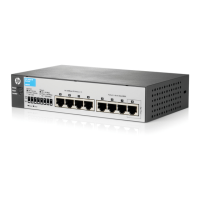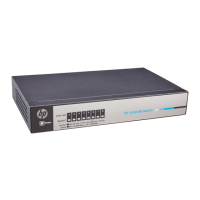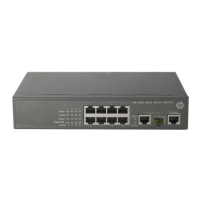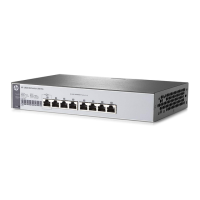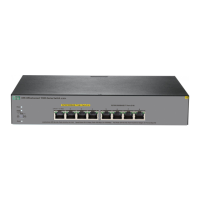313
If the client is using only MD5-Challenge EAP authentication or the "username + password" EAP
authentication initiated by an HP iNode 802.1X client, you can use both EAP termination and EAP
relay. To use EAP-TL, PEAP, or any other EAP authentication methods, you must use EAP relay.
4. Click Advanced to expand the advanced 802.1X configuration area.
Figure 304 Advanced configuration
5. Configure advanced 802.1X settings as described in Table 99.
6. Click Apply.
Table 99 Configuration items
Item Descri
Quiet
Specify whether to enable the quiet timer.
The quiet timer enables the network access device to wait a period of time before
it can process any authentication request from a client that has failed an 802.1X
authentication.
Quiet Period Set the value of the quiet timer.
Retry Times
Set the maximum number of authentication request attempts.
The network access device retransmits an authentication request if it does not
receive a response to the request it has sent to the client within a period of time (set
by the TX Period
or the Supplicant Timeout Time
value). The network access device
stops retransmitting the request, if it has made the maximum number of request
transmission attempts but has not received a response.
TX-Period Set the username request timeout timer.
Handshake Period Set the handshake timer.
Re-Authentication Period Set the periodic online user re-authentication timer.
Supplicant Timeout Time Set the client timeout timer.
Server Timeout Time Set the server timeout timer.
IMPORTANT:
Do not change the timer parameters of global 802.1X from their default values unless you have
determined that the changes would improve the interaction process. For more information about 802.1
times, see "802.1X timers."
Configuring 802.1X on a port
1. From the navigation tree, select Authentication > 802.1X.
2. In the Ports With 802.1X Enabled area, click Add.

